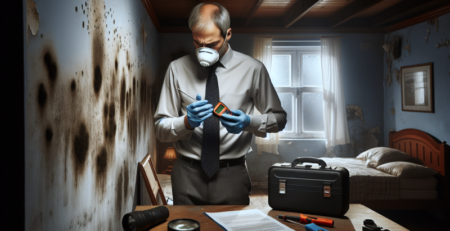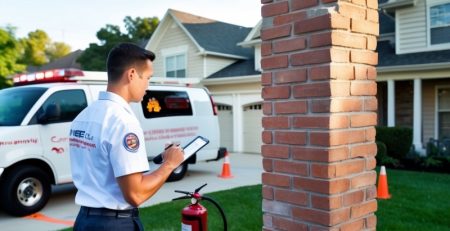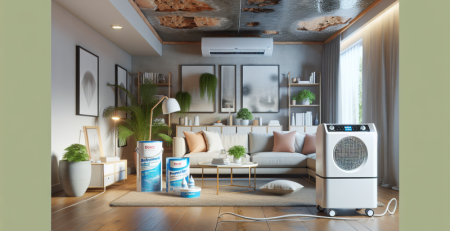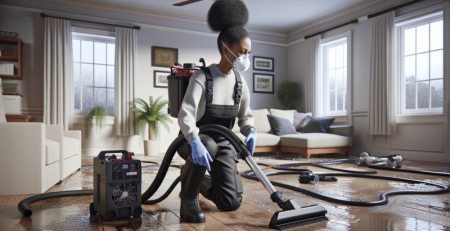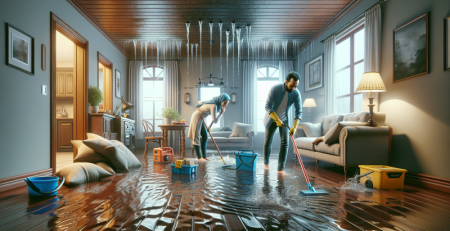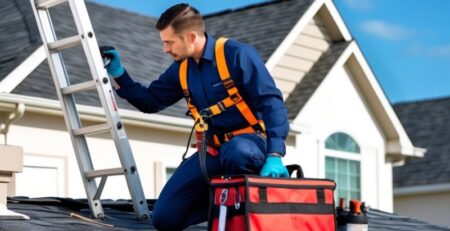Water Damage: Immediate Steps to Take
### Water Damage: Immediate Steps to Take
Water Damage: Immediate Steps to Take. Have you ever faced the devastating effects of water damage in your home? At Kraus Restoration, we understand the urgency and stress that comes with such situations. As NJ’s leaders in water, mold, and fire damage restoration, we offer 24/7 emergency services with rapid response times and IICRC certified experts. Visit [Kraus Restoration](https://krausrestoration.com/) or call (973) 886-2021 for immediate assistance.
When water damage strikes, quick action is crucial to minimize the impact. This article will guide you through the immediate steps to take, from stopping the water source to contacting professional help. By following these steps, you can significantly reduce the damage and start the restoration process promptly.
But these are just the initial steps. To fully understand how to handle water damage effectively, including expert tips from industry leaders, keep reading. Let’s dive into the essential actions you need to take to protect your property and restore it to its original condition. One of the most important first steps is to identify water damage before it spreads to avoid extensive repairs.
Understanding Water Damage
Water damage occurs when excess water infiltrates a property, leading to destruction and decay. Common causes include natural disasters like floods, plumbing failures, and roof leaks. There are three types of water damage: clean water, gray water, and black water. Clean water comes from sources like broken pipes and rain. Gray water is slightly contaminated, often from appliances. Black water is highly contaminated, containing harmful bacteria and chemicals, usually from sewage or floodwaters.
The consequences of water damage can be severe. Property damage includes structural issues, ruined furniture, and destroyed personal belongings. Health risks are also significant. Mold growth can lead to respiratory problems and allergic reactions. Additionally, prolonged exposure to contaminated water can cause serious illnesses.
For more information on how to handle water damage, visit our water cleanup page. If you need assistance, don’t hesitate to contact us. Protect your property and health by addressing water damage promptly.
Immediate Safety Precautions
In the event of water damage, your first priority should be personal safety. Begin by turning off the electricity to prevent any risk of electrocution. Avoid contact with contaminated water, as it can harbor harmful bacteria and chemicals. If the water level continues to rise or if structural damage is evident, evacuate the premises immediately.
Wearing protective gear is crucial. Equip yourself with rubber boots, gloves, and a mask to minimize exposure to hazardous materials. For more detailed guidance, consider exploring our water cleanup services.
If you need professional assistance, don’t hesitate to contact us. For more information about our comprehensive solutions, visit our about page. Prioritize your safety and take these immediate steps to mitigate risks effectively.
Assessing the Extent of Damage
Begin by visually inspecting the affected areas. Look for discoloration, warping, and any signs of mold growth. Pay close attention to walls, ceilings, and floors. Use a flashlight to check dark corners and hidden spaces.
Next, employ moisture meters to gauge the extent of the damage. These tools provide accurate readings of moisture levels in various materials. They help identify areas that may not show visible signs of water damage but are still affected. Infrared cameras can also be useful for detecting hidden moisture.
Documenting the damage is crucial for insurance purposes. Take clear, detailed photos of all affected areas. Record the extent of the damage and any items that need repair or replacement. This documentation will support your insurance claim and ensure you receive adequate compensation.
For more information on our services, visit our services page. If you need immediate assistance, don’t hesitate to contact us. We are here to help you through every step of the restoration process.
Stopping the Source of Water
First, locate the source of the water. Check common areas like under sinks, near appliances, or around the water heater. If you can’t find it, shut off the main water supply immediately. This step is crucial to prevent further damage. Next, use temporary measures to contain the water spread. Towels, buckets, and mops can help manage small leaks. For larger issues, consider using a wet/dry vacuum.
If the source remains elusive, it’s essential to seek professional help. Experts can quickly identify and address the problem, minimizing damage. For more information on professional services, visit our water cleanup page.
Remember, timely action is vital. Ignoring the issue can lead to severe damage and costly repairs. For additional assistance, explore our contact page. Taking these steps can save you time, money, and stress. For more tips and services, check out our about page.
Water Removal Techniques
Effective water extraction is crucial to mitigate damage. Start by using pumps to remove large volumes of water. These are ideal for significant flooding. For smaller areas, wet/dry vacuums are efficient. They can handle minor spills and dampness. Removing standing water quickly is essential to prevent mold growth and structural damage. Delays can lead to costly repairs and health hazards.
Professional water removal services offer expertise and advanced equipment. They ensure thorough extraction and drying. This reduces the risk of long-term issues. Experts also provide assessments to identify hidden moisture. This step is vital for complete restoration.
For more information on our services, visit our water cleanup page. To learn about our team, check out our about section. If you need immediate assistance, please contact us.
Drying and Dehumidification
To effectively dry out the affected areas, start by using fans and dehumidifiers. Position fans to promote air circulation, focusing on the dampest spots. Dehumidifiers will help extract moisture from the air, speeding up the drying process. It’s crucial to remove moisture quickly to prevent mold growth. Mold can develop within 24 to 48 hours, so immediate action is essential.
Monitor moisture levels regularly using a moisture meter. This tool will help you ensure that the area is drying properly. Keep in mind that the drying process can take several days. Patience and persistence are key. Check for hidden moisture in walls, floors, and furniture. If moisture remains, it can lead to structural damage and health issues.
For more detailed guidance, consider professional services. Visit our water cleanup page for expert assistance. Additionally, our mold cleanup services can help if mold has already started to grow. For any inquiries, feel free to contact us.
Cleaning and Sanitizing
Effective cleaning after water damage involves several critical steps. First, remove any standing water using pumps or wet vacuums. Next, dry the affected area thoroughly with dehumidifiers and fans. For different types of water damage, such as clean water from a broken pipe or contaminated water from flooding, the cleaning process varies. Clean water damage requires basic cleaning, while contaminated water necessitates more rigorous disinfection.
Using disinfectants and sanitizers is essential to prevent microbial growth. Apply EPA-approved disinfectants to all surfaces, ensuring they are safe for the materials being treated. This step is crucial to eliminate bacteria, mold, and other pathogens that thrive in damp environments.
Cleaning personal belongings and furniture is equally important. Items like clothes, upholstery, and carpets should be thoroughly cleaned and dried. For heavily contaminated items, consider professional cleaning services. This ensures that all traces of contamination are removed, preventing future health risks.
For more detailed guidance on water damage restoration, visit our water cleanup page. If you need professional assistance, don’t hesitate to contact us.
Repairing and Restoring the Property
Assessing structural damage is the first step in repairing your property. Begin by inspecting walls, floors, and ceilings for any signs of weakness. Pay close attention to areas where water has pooled. If you notice any sagging or cracks, immediate action is necessary. Replacing damaged materials like drywall and flooring is crucial to prevent mold growth. Remove all compromised sections and replace them with new, dry materials.
Professional restoration services play a vital role in this process. They have the expertise and equipment to handle extensive damage. These experts can also ensure that all repairs meet safety standards. For more information on our comprehensive services, visit our services page. If you need specialized assistance, our water cleanup team is ready to help.
For a detailed consultation, feel free to contact us. We are committed to restoring your property to its original condition efficiently and effectively.
Preventing Future Water Damage
Regular maintenance is crucial to prevent water damage. Start by inspecting your plumbing for leaks and corrosion. Check your roof for missing shingles and damaged flashing. Clean gutters and downspouts to ensure proper drainage. Additionally, consider installing preventive measures like sump pumps and water alarms. These devices can alert you to potential issues before they become severe.
Having an emergency plan is also essential. Know where your main water shut-off valve is located and ensure all household members are aware of it. Keep the contact information of a reliable restoration company handy. For more information on our services, visit our services page.
Regularly review and update your emergency plan to adapt to any changes in your home. For comprehensive water damage solutions, explore our water cleanup services. By taking these steps, you can significantly reduce the risk of future water damage and protect your home.
Frequently Asked Questions (FAQs)
When you discover water damage, act quickly. First, stop the water source and turn off electricity. Mold can start growing within 24 to 48 hours. While minor water damage might be manageable, extensive damage requires a professional. To ensure your property is fully dry, use moisture meters and inspect hidden areas. Health risks include respiratory issues and allergies due to mold. Prevent future damage by maintaining your plumbing and sealing cracks. Check if your insurance covers water damage repairs by reviewing your policy. Hidden water damage signs include discoloration, musty odors, and warped floors. Choose a reliable restoration company by checking reviews and certifications. If water damage occurs during a natural disaster, prioritize safety and contact professionals immediately.
For more information on our services, visit our services page. To see our past work, explore our projects. If you need assistance, don’t hesitate to contact us.

